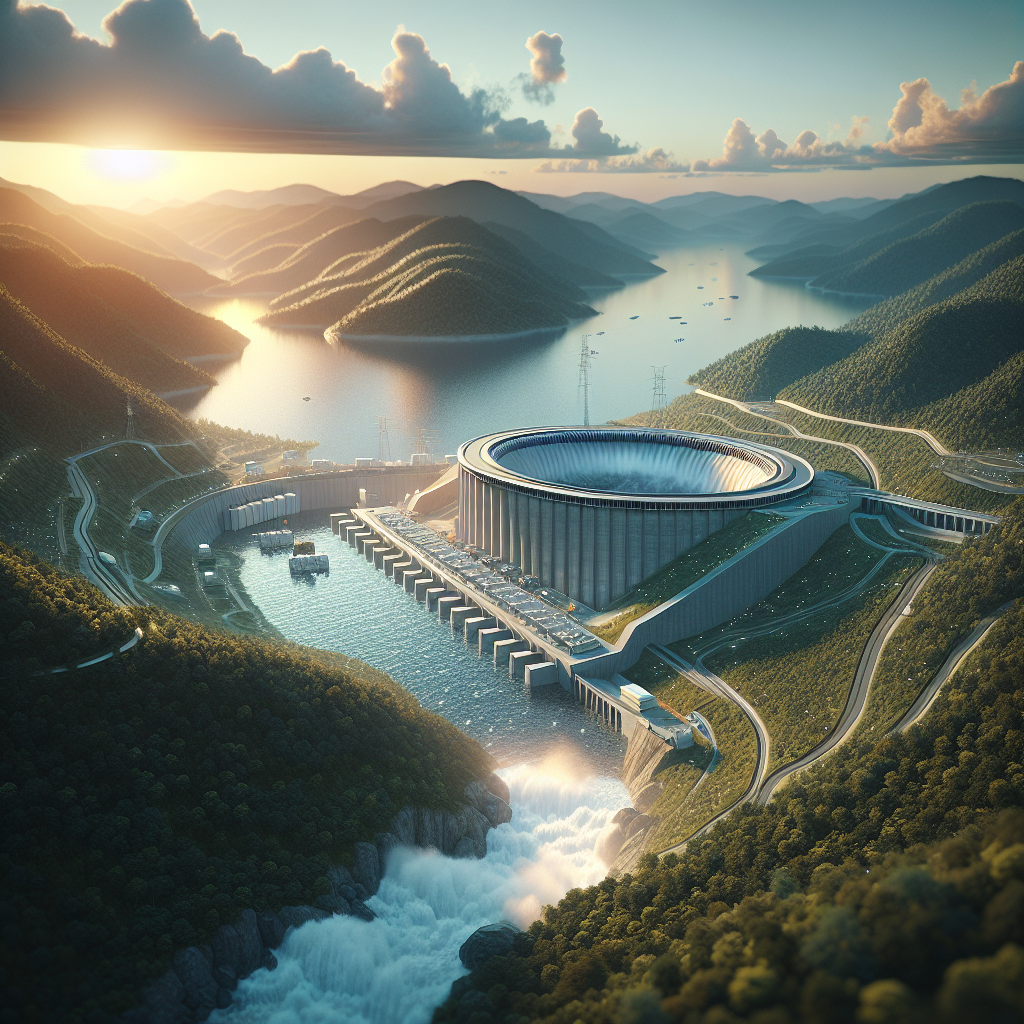Pumped Hydro Storage: An Old Technology with New Potential
In the quest for sustainable energy solutions, one ancient technology stands out for its simplicity, efficiency, and potential to help the world meet its renewable energy targets: pumped hydro storage (PHS). Despite being over a century old, PHS is experiencing a resurgence, as nations globally seek to bolster their renewable energy capacity and reduce carbon emissions. This article delves into the mechanics of pumped hydro storage, its advantages, the challenges it faces, and its future potential, concluding with a FAQ section to address common inquiries.
Understanding Pumped Hydro Storage
Pumped hydro storage operates on a simple yet effective principle: using excess electricity to pump water from a lower reservoir to a higher one, storing energy in the process. When electricity demand peaks, water is released back to the lower reservoir through turbines, generating electricity. Essentially, PHS works as a giant battery, storing energy during periods of low demand and producing energy during high demand periods.
The Advantages of Pumped Hydro Storage
1. Reliability and Durability: PHS systems are incredibly reliable and can last over 50 years with proper maintenance, much longer than chemical batteries.
2. Large-scale Energy Storage: PHS facilities can store vast amounts of energy, making them ideal for balancing the grid over days, weeks, or even months.
3. Quick Response: PHS can ramp up from zero to maximum output very quickly, providing essential services like frequency regulation and load following for grid stability.
4. Cost-Effectiveness: Though upfront costs are high, the long-term operation and maintenance costs of PHS are relatively low, making it a cost-effective solution over its lifespan.
5. Environmental Benefits: By enabling more efficient use of renewable energy sources, PHS can significantly reduce reliance on fossil fuels and lower greenhouse gas emissions.
Challenges Facing Pumped Hydro Storage
Despite its advantages, PHS is not without challenges. The primary hurdles include:
1. Environmental and Social Impact: Building PHS facilities often requires large-scale environmental alteration, which can lead to ecosystem disruption, loss of wildlife habitats, and displacement of communities.
2. High Initial Investment: The construction of PHS plants requires significant capital, making it challenging to secure financing.
3. Site Constraints: Suitable locations for PHS are limited, as the technology requires specific geographical features to be efficient, such as large bodies of water and elevation differences.
The Future Potential of Pumped Hydro Storage
The global push towards renewable energy has revitalized interest in PHS. Innovations and improvements in technology are making PHS more viable and environmentally friendly. For instance, the use of existing water bodies and abandoned mines for PHS significantly reduces environmental impact and capital costs. Moreover, the integration of PHS with solar and wind power can create highly efficient, renewable energy systems that provide stable, on-demand power.
As countries aim to achieve carbon neutrality, the role of PHS is becoming increasingly important. Its ability to provide large-scale, long-duration storage makes it a cornerstone technology for a renewable-powered future. Governments and private investors are beginning to recognize the untapped potential of PHS, leading to new projects and research focused on overcoming its challenges and expanding its deployment.
FAQs
Q1: How does pumped hydro storage differ from traditional hydroelectric power?
A1: Traditional hydroelectric power generates electricity by flowing water through turbines. In contrast, pumped hydro storage adds a step by using electricity to pump water to a higher elevation, storing energy, which can be released to generate electricity when needed.
Q2: Is pumped hydro storage environmentally friendly?
A2: While PHS is more environmentally friendly than fossil fuels, its environmental impact depends on the project. Using natural bodies of water and minimizing land use can reduce its ecological footprint.
Q3: How efficient is pumped hydro storage?
A3: PHS is highly efficient, with round-trip efficiency rates typically between 70% to 80%. Advances in technology are continually improving these rates.
Q4: Can pumped hydro storage be used alongside other renewable energy sources?
A4: Absolutely. PHS is complementary to solar and wind energy, as it can store excess energy generated during peak production times and release it when demand is high or production is low.
Q5: What is the global potential for pumped hydro storage?
A5: The global potential is vast, especially in regions with favorable geography. Innovations in using existing landscapes and infrastructure expand this potential even further, making PHS a key player in the global transition to renewable energy.
Q6: Are there any new developments in pumped hydro storage technology?
A6: Yes, there are several, including the development of underground PHS in abandoned mines, the use of seawater for coastal PHS projects, and the integration of artificial intelligence to optimize efficiency and storage capacity.
Q7: How can the challenges of pumped hydro storage be addressed?
A7: Addressing the challenges requires a multi-faceted approach, including technological innovation, policy support, community engagement, and sustainable planning to minimize environmental and social impacts.
Conclusion
Pumped hydro storage is an old technology with new potential, offering a path to a sustainable, renewable energy future. Its benefits are clear, from providing reliable, large-scale storage and grid stability to complementing other renewable sources like wind and solar. While challenges remain, the ongoing innovations and increasing recognition of its value are paving the way for a broader adoption of PHS around the world. As we move towards greener energy solutions, pumped hydro storage stands as a testament to the enduring power and potential of harnessing nature in harmony with technological advancement.

